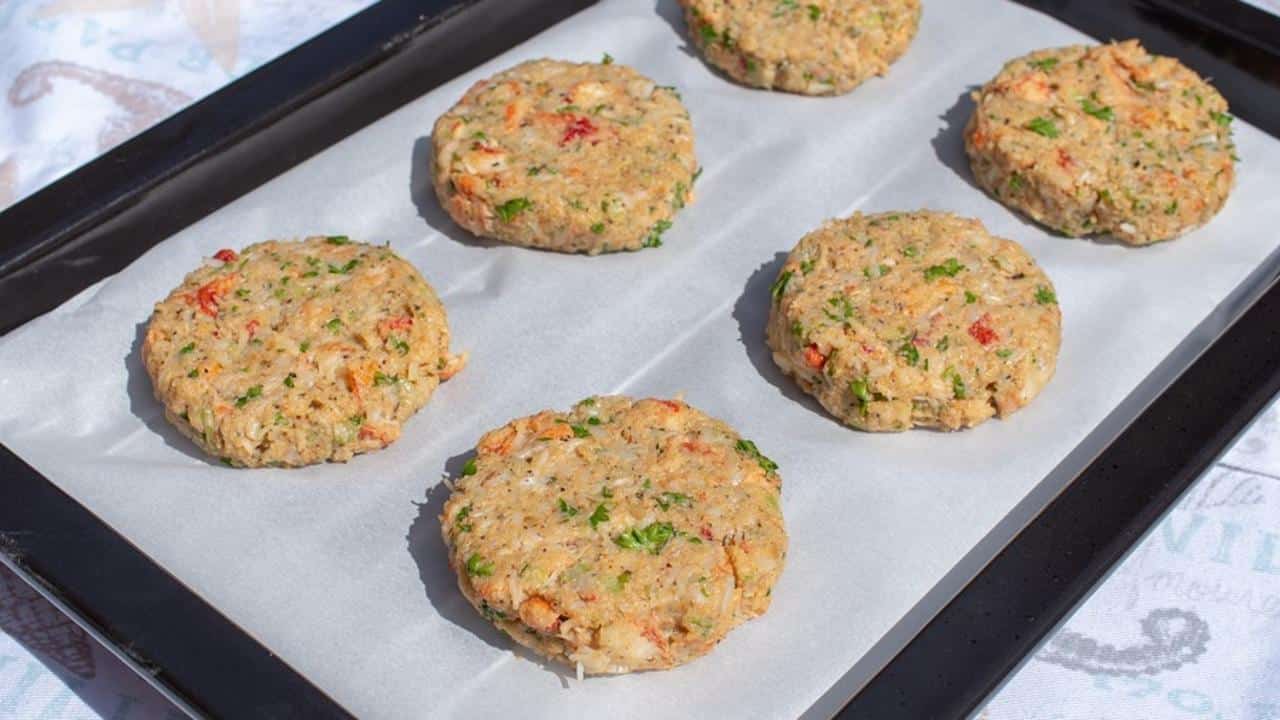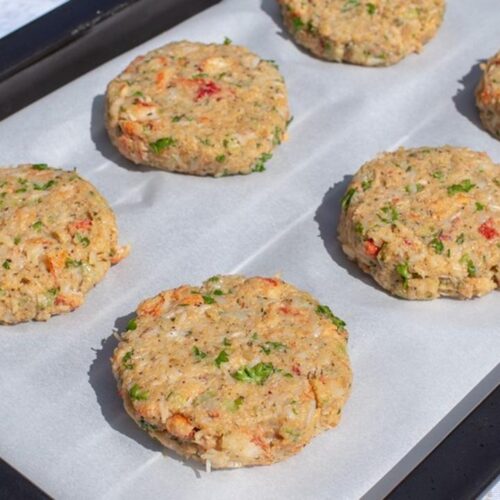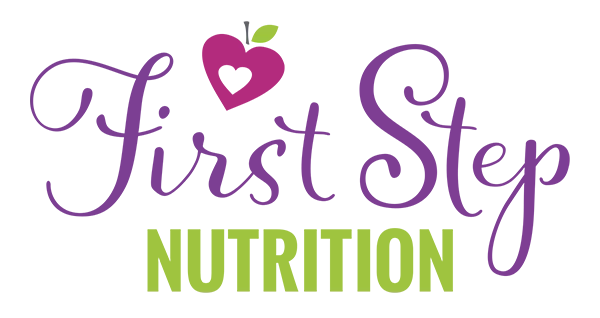
Easy Salmon fish cakes for baby your whole family will love
Your whole family will love this easy salmon fish cakes for baby recipe. The fish cakes are soft & easy to hold for your baby-led weaner.
As a dietitian and mom of three, I’m always searching for easy, nutritious and cost-effective recipes. This salmon fish cake recipe meets all three criteria. It’s a go-to when I have a leftover baked potato and canned or leftover salmon.
It is a great way to introduce fish to your baby. For older siblings, finding fish recipes they’ll eat can be hard. These are a great way to serve salmon, even for those who aren’t big fans, as the flavour is mild when mixed with the potatoes.
Is fish healthy for babies?
Salmon has lots of nutritional benefits. Oily fish is high in omega-3 fats, which are important for brain development—especially EPA and DHA, found in fish but not plant-based omega-3 sources. And salmon contains more omega-3 than white fish.
Salmon is a great source of protein and also contains some iron. The new World Health Organization guidelines on complementary feeding suggest offering animal-based protein daily once starting solids since it is nutrient-dense.
Types of salmon for baby
Wild-caught salmon vs Farmed salmon
The nutrition content of salmon depends on the salmon’s diet and the type of salmon. Wild Sockeye and Chinook are higher in omega-3 than wild Pacific, for example. Wild salmon is slightly higher in protein while farmed salmon is higher in fat. Both types are nutritious.
Mercury
Regarding mercury content, wild salmon is slightly higher than farmed salmon. But overall, all salmon is low-mercury fish. So, salmon is a great option when starting solids for your baby and whole family!
Polychlorinated biphenyls (PBCs)
Farmed salmon used to be higher in chemical contaminants like PCBs. However, farming practices have changed, and a more recent study found PCBs were higher in wild salmon. But still way under the maximum allowable limits for safety.
Environmental stewardship
Environment-wise, there is a concern about over-fishing of wild fish. And pollution concerns in salmon farms. Land-based salmon farms might help ward off these concerns in the future.
You can ensure the fish you buy is certified and contains the Marine Stewardship Council symbol.
Canned salmon
Canned salmon is cheaper and already cooked, so it is the easiest form of salmon to use. Just ensure there’s not a lot of added salt, if any, like this sustainable, no-added salt canned salmon in BPA-free cans from Raincoast Trading.
Canned salmon is easy to keep in the kitchen and relatively cost-effective. It can help balance a meal for your baby by including animal protein. You can throw a few flakes on their highchair tray, add a fruit or veggie, and they’re good to go!
Is raw sushi salmon safe for baby?
It’s not advised to feed your baby uncooked meat, including fish. Children five years old and under are at higher risk for foodborne illness and getting food poisoning.
Health Canada recommends avoiding raw fish until age 5. Until then, skip the sashimi and order some California Rolls and seaweed salad for your child instead!
Can babies and toddlers eat smoked salmon?
Hot smoked salmon is fully cooked and dark pink and flaky. It is safe to offer to your baby or toddler. But only in small amounts infrequently, as sodium is high.
Cold smoked salmon is not fully cooked. So, it could contain parasites or bacteria that would’ve been killed in the cooking process. Avoid offering cold smoked salmon to your young child.
When can babies eat fish?
Your baby can eat fish cakes when they start solids, around 6 months of age. When your baby has a pincer grasp and can pick up smaller pieces of food between their forefinger and thumb, you can offer them smaller chunks of fresh cooked or canned salmon.
These homemade salmon cakes for babies is a great starter solid food. They are large enough to pick up with a palmer grasp and are nice and tender, so they’re easy to chew and not a choking hazard.
Fish allergies in babies
Fish is one of the common food allergens. In the unlikely case your baby is allergic, you will likely notice a rash, which is the most common sign of allergies in babies.
It’s recommended to introduce allergens early after starting solids rather than later. This may promote tolerance to the allergy and actually prevent allergies!
When introducing allergens, you can wait 3-5 days before introducing another high-risk allergen (like dairy, peanuts, tree nuts, soy, cow’s milk, eggs and wheat). You don’t have to do this with most foods, but you can with these higher-risk foods.
What to serve on the side with salmon fish cakes for baby
You can offer the salmon cakes with a slice of lemon, too. Your baby will get to suck on the lemon, and you can see if they enjoy the sour taste. Or at least laugh at the funny faces they make!
Serve the fish cakes with cooked vegetables like steamed broccoli, kale chips or avocado slices. These fish cakes already contain mashed potatoes; therefore, they are multiple food groups!
Want more beginning recipes for your self-feeder? Grab my free download: “7 Easy Baby-led Weaning Recipes your Little one will Love.”

Salmon Fish Cakes for Baby
Equipment
- non stick skillet
Ingredients
- 213 g salmon, drained, skin and large bones removed 1 can or leftover cooked salmon
- 1 cup mashed potatoes
- 1/4 cup finely chopped green onion
- 1/4 cup finely chopped red bell pepper
- 3 Tbsp chopped fresh dill
- 3 Tbsp milk
- 1 large egg, beaten
- salt & pepper
- non-stick spray
Instructions
- In a medium bowl, combine salmon, potatoes, green onion, red pepper, dill and milk.
- Season to taste with salt and pepper. Gently stir in egg.
- Form mixture into four 3⁄4-inch (2 cm) thick cakes.
- Cover and refrigerate for at least 30 minutes or overnight to let flavor develop.
- Heat a large nonstick skillet over medium heat. Spray with cooking spray.
- Add fish cakes and cook for about 2 minutes per side or until browned on both sides and hot in the center.
Notes
Founder of First Step Nutrition | Registered Dietitian Nutritionist
Jen believes raising happy, well-nourished eaters who have a healthy relationship with food doesn't have to be a battle! She is an author and speaker with 18 years of experience specializing in family nutrition and helps parents teach their kids to try new foods without yelling, tricking, or bribing.







Courtney
Posted at 09:41h, 26 FebruaryYou said 1 cup of mashed potatoes. Mine turned out a soupy mess…now I’m realizing that you probably meant mashed potato flakes. Now I have to figure out what to do with this mess so I don’t waste food.
Jennifer House MSc, RD
Posted at 11:41h, 26 FebruaryNo, mashed potatoes is correct! What was the consistency of your mashed potatoes? Mine are quite solid. Like you can pick them up with a spoon, flip the spoon upside down and they won’t fall off! Perhaps less liquid to the mashed potatoes? Did you use canned salmon and if so, was it drained? That could cause extra liquid too. Perhaps try adding some cornstarch or flour to absorb the extra liquid at this point!